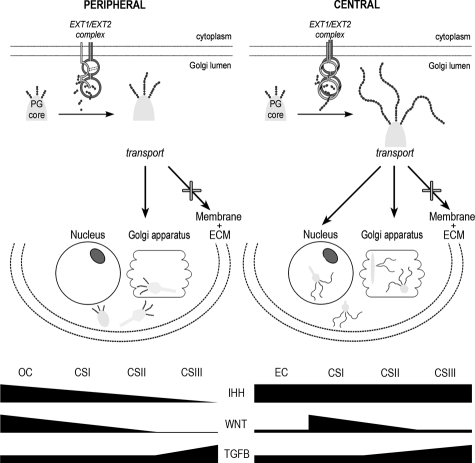Figure 6.
Overview of the EXT/HSPG pathway involved in both peripheral and central chondrosarcomas. Despite the absence of EXT alterations in central chondrosarcomas there is cytoplasmic retention of HSPGs, which is similar to peripheral chondrosarcomas and nuclear SDC2 localization that was specific for central chondrosarcomas. In addition, whereas IHH signaling decreased with grade in peripheral chondrosarcomas, it is still active in high-grade central chondrosarcomas. Active canonical WNT signaling might be important for the transition from benign to malignant central cartilaginous tumor type, however it is not crucial for tumor progression, whereas TGF-β is. Our results therefore suggest that disturbed HSPG function is involved in the histogenesis of both central and peripheral chondrosarcoma, although different steps in HSPG biosynthesis seem affected. (Figure based on Hameetman et al.22).

